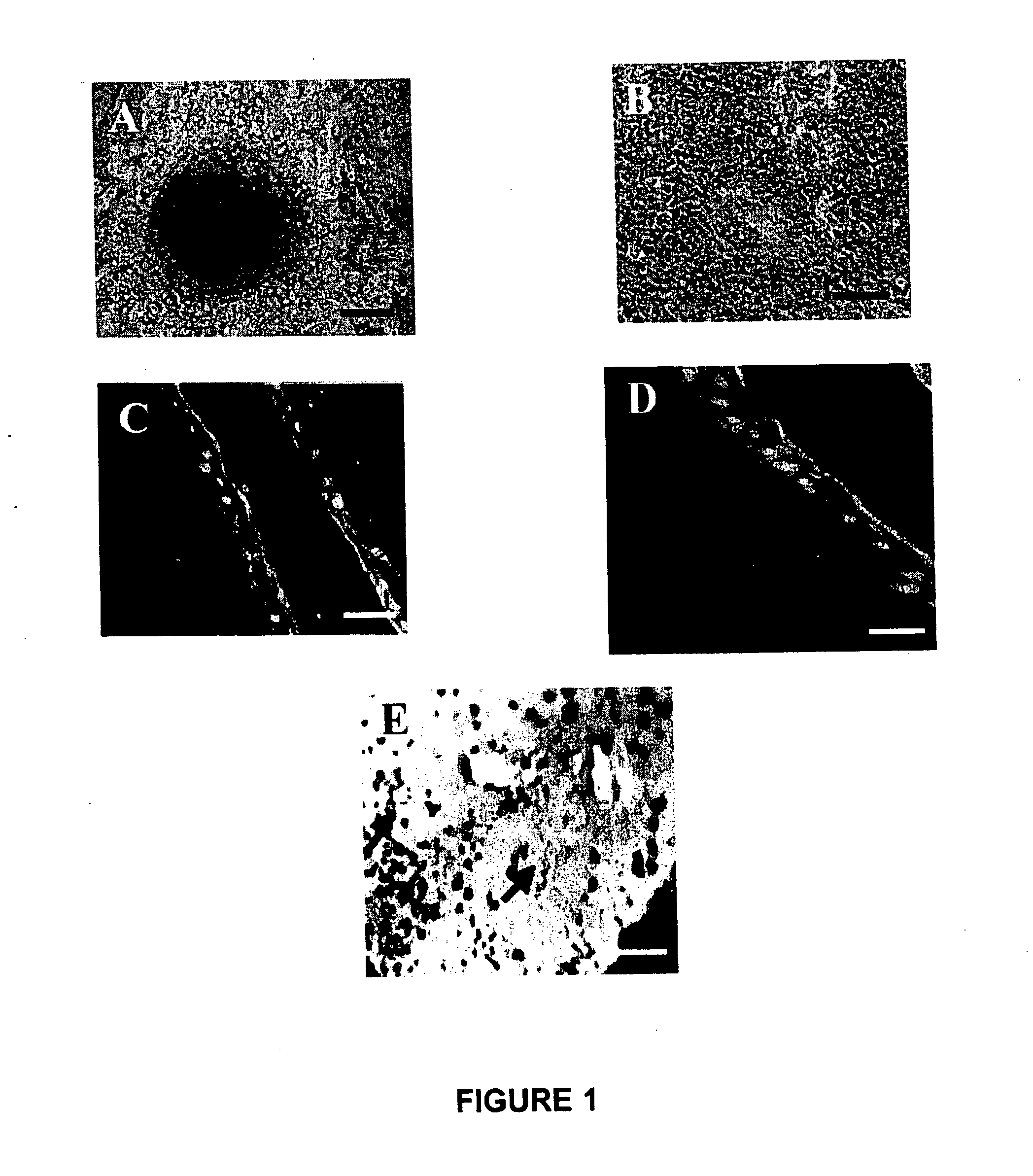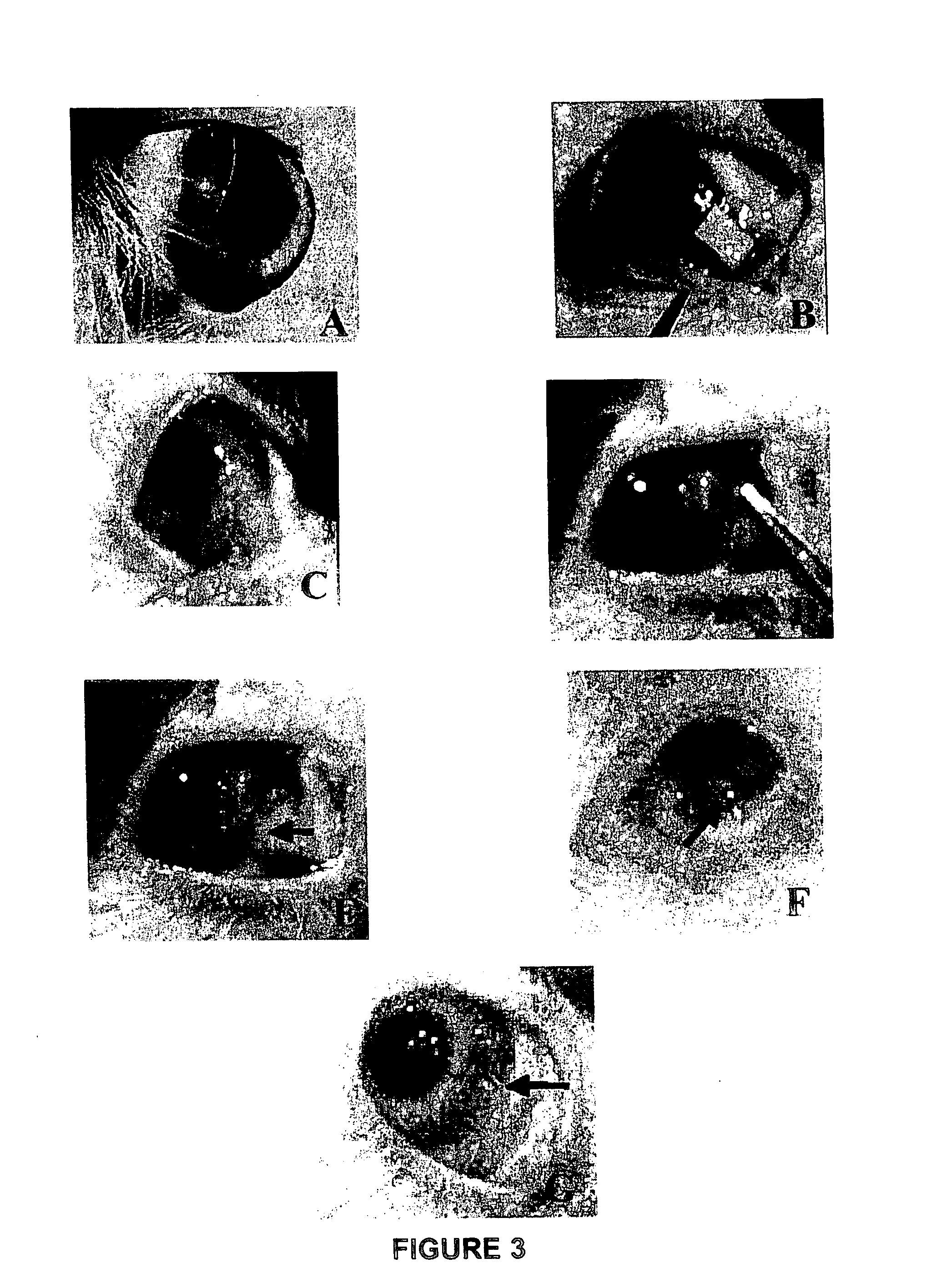Conjunctival tissue system
a tissue system and conjunctival technology, applied in the field of tissue systems, can solve the problems of limited long-term proliferative capacity, eye irritation, and lower regenerative potential after transplantation
- Summary
- Abstract
- Description
- Claims
- Application Information
AI Technical Summary
Benefits of technology
Problems solved by technology
Method used
Image
Examples
example 1
[0060] Generation of a Conjunctival Tissue System.
[0061] The process of culturing conjunctival cells from a tissue biopsy as disclosed in this Example is very simple and different from the existing millicell method. See Pellegrini et al., J. Cell Biol 145(4):769-782, 1999; Belyakov et al., Proc. Natl. Acad. Sci USA 102(40):14203-208, 2005. With the approval of an ethics committee, the collection of the conjunctival biopsies was done with prior informed consent of each patient and donor. The protocols followed were according to the tenets of the Declaration of Helsinki, and were approved by the Reliance Life Sciences (RLS) ethics committee. About 2 mm2 of human conjunctival tissue was surgically removed from the fornix during periocular surgery a the Zee Eye clinic, Bandra, Mumbai, India. The conjunctiva was collected carefully only from the periphery of the eyeball and on the inner surface of the eyelid. The excised tissue was then immediately placed in a transport medium consistin...
example 2
[0071] The present Example examines the ability of the conjunctival tissue system prepared using a plain culture scheme as described in Example 1 to treat the injured eye of a rabbit model of ocular conjunctival burn injury xeno-transplanted with the tissue system. The conjunctival tissue system was grafted using a tissue adhesive in the rabbit model. After transplantation, the survival and integration of the human cells were traced and evaluated using histopathology and immunostaining. The safety of the conjunctival tissue system in terms of abnormal vascularisation underneath, as well as polymorphonuclear leukocytes (PMN) infiltration, was checked in parallel with controls.
[0072] The rabbit model of chemical injury was prepared as follows. Prior approval of the internal review board (IRB), Institutional Animal Ethics Committee (IAEC), and Committee for the Purpose of Control and Supervision of Experiments on Animals (CPCSEA) was obtained for the animal protocols as described here...
PUM
 Login to View More
Login to View More Abstract
Description
Claims
Application Information
 Login to View More
Login to View More - R&D
- Intellectual Property
- Life Sciences
- Materials
- Tech Scout
- Unparalleled Data Quality
- Higher Quality Content
- 60% Fewer Hallucinations
Browse by: Latest US Patents, China's latest patents, Technical Efficacy Thesaurus, Application Domain, Technology Topic, Popular Technical Reports.
© 2025 PatSnap. All rights reserved.Legal|Privacy policy|Modern Slavery Act Transparency Statement|Sitemap|About US| Contact US: help@patsnap.com



